Pre-Civil War Gothic Church Faces Wrecking Ball to Make Way for Apartments in Bed Stuy
The St. Lucy-St. Patrick’s Roman Catholic Church on Willoughby Avenue will be the latest in a string of historic religious buildings on the stretch to be replaced by large residential developments.

The church in August 2023. Photo by Susan De Vries
It looks likely the St. Lucy-St. Patrick’s Roman Catholic Church on Willoughby Avenue in Bed Stuy will be demolished for a new residential development. The Gothic Revival church, which has dominated the block since 1856, will be the latest in a string of historic religious buildings on the stretch to be replaced by large residential developments.
An application for a full demolition permit was filed with the city’s Department of Buildings Tuesday, and the Roman Catholic Church of St. Patrick in July entered a contract to sell the building and its adjacent rectory to developer Wolfe Landau of Watermark Capital Group for $12.25 million, according to court filings. The sale will need to get approval from the state’s attorney general; PincusCo was the first to report the contract.
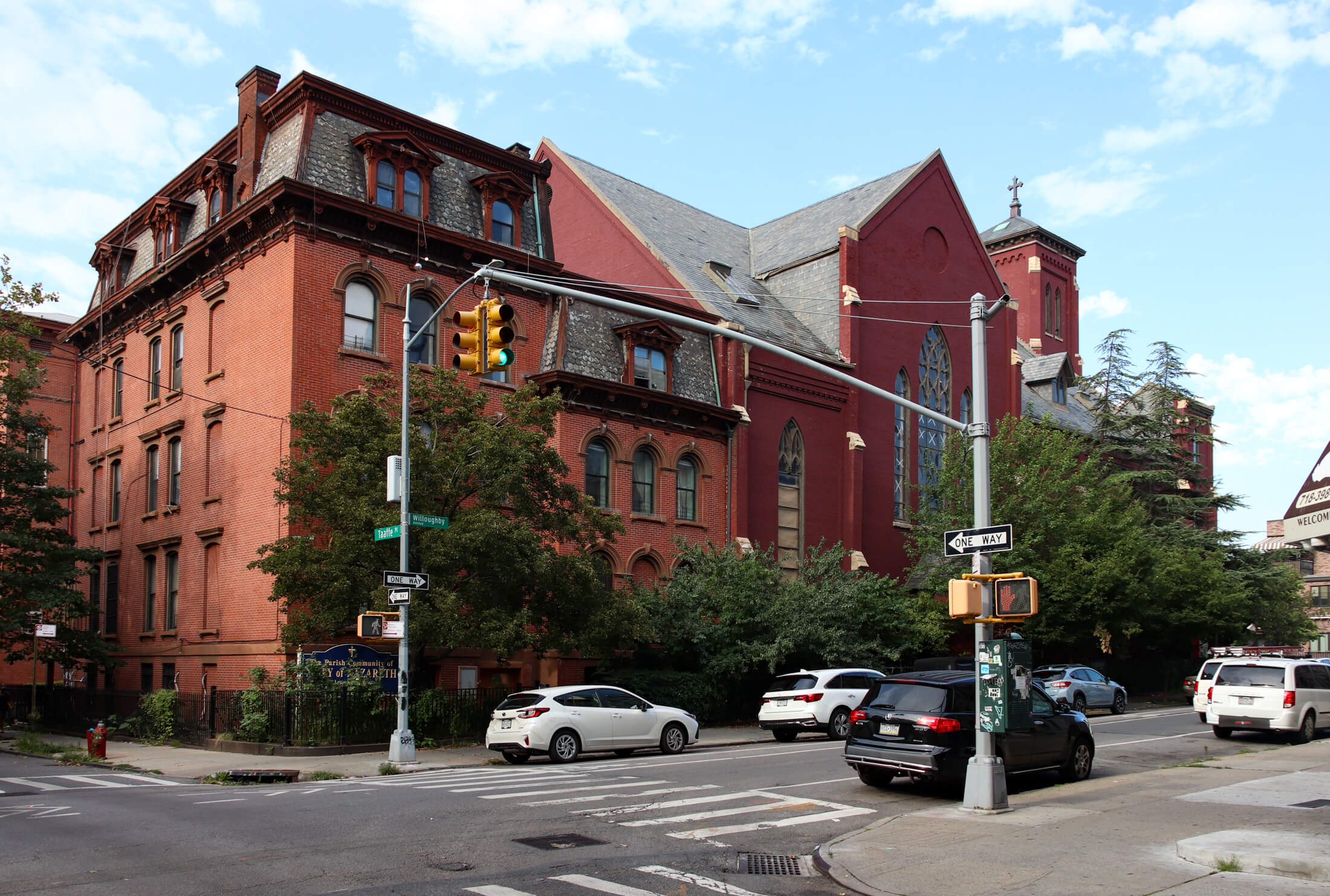
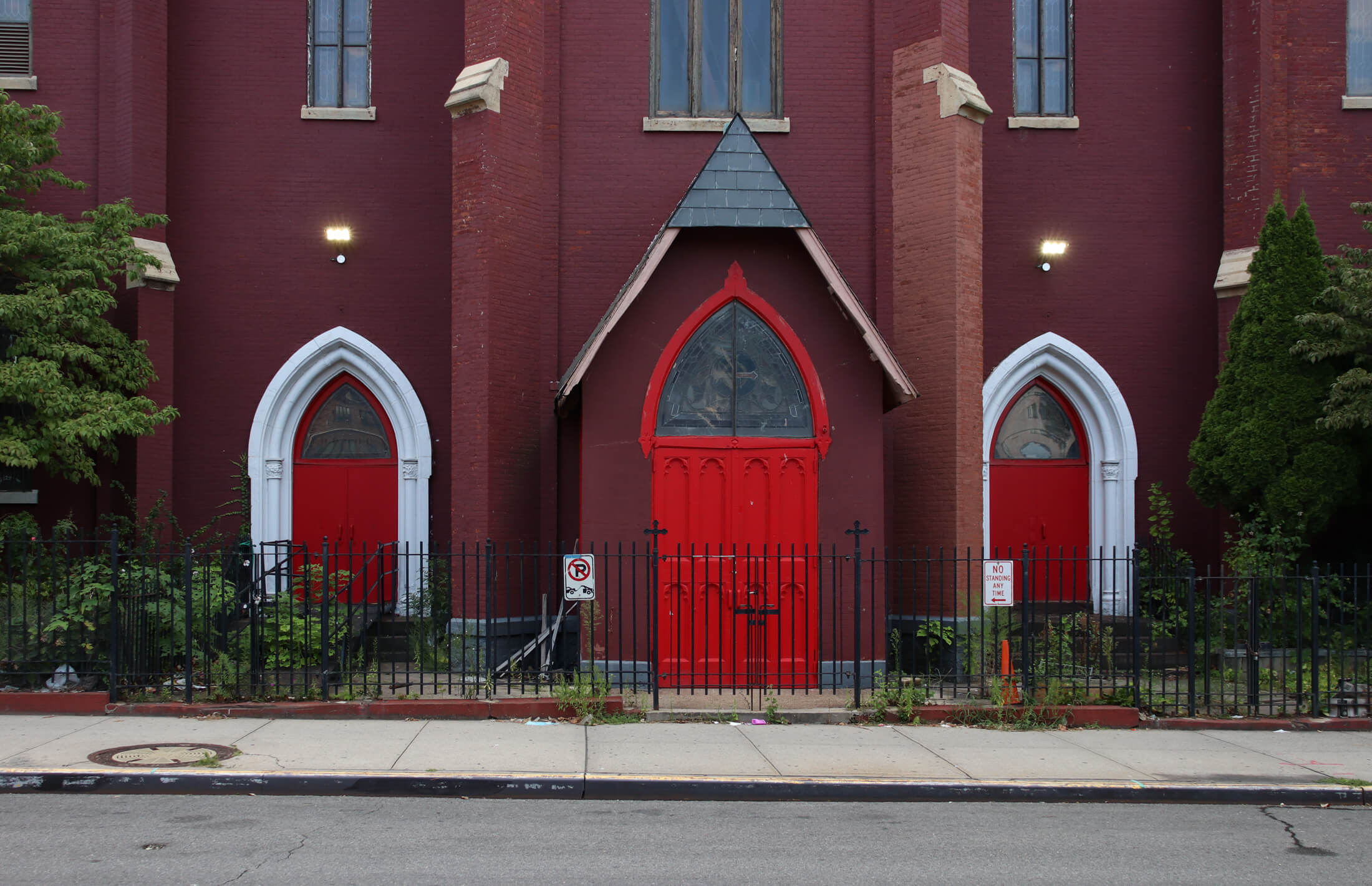
The site in contract includes two parcels that run along Willoughby Avenue from Taaffe Place to Kent Avenue. They house the pre-Civil War Gothic Revival church building at 920 Kent Avenue and the Second Empire/Italianate rectory next door at 295 Willoughby Avenue.
The church, which was initially just St. Patrick’s, was completed in 1856 and designed by architect James J. Lyons, according to newspaper accounts of the time. Around 1873, noted ecclesiastical architect Patrick Keeley made extensive improvements to the building. The rectory went up around 1875, according to the Real Estate Record. In the 20th century, the church combined with St. Lucy’s to become St. Lucy-St. Patrick’s Roman Catholic Church.
The house of worship sits amid what was once a three-block span down Willoughby Avenue of stately 1850s and 1860s red brick and brownstone buildings owned by religious institutions. The swath includes St. Mary’s Episcopal Church between Emerson Place and Classon Avenue and the Sisters of Mercy Convent between Classon Avenue and Taaffe Place in addition to St. Lucy-St. Patrick’s Roman Catholic Church.
The blocks lie just outside the Clinton Hill Historic District to the east.
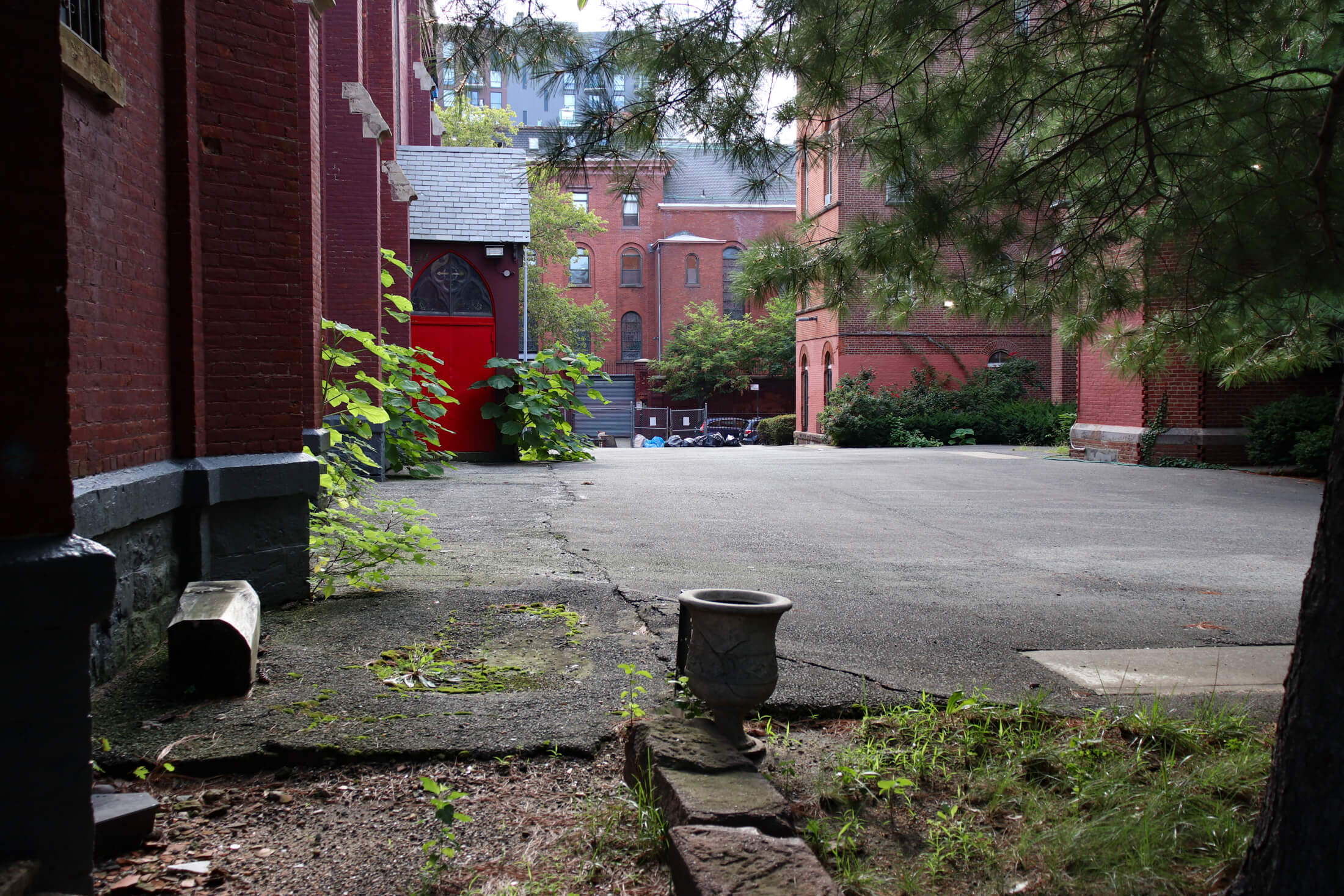
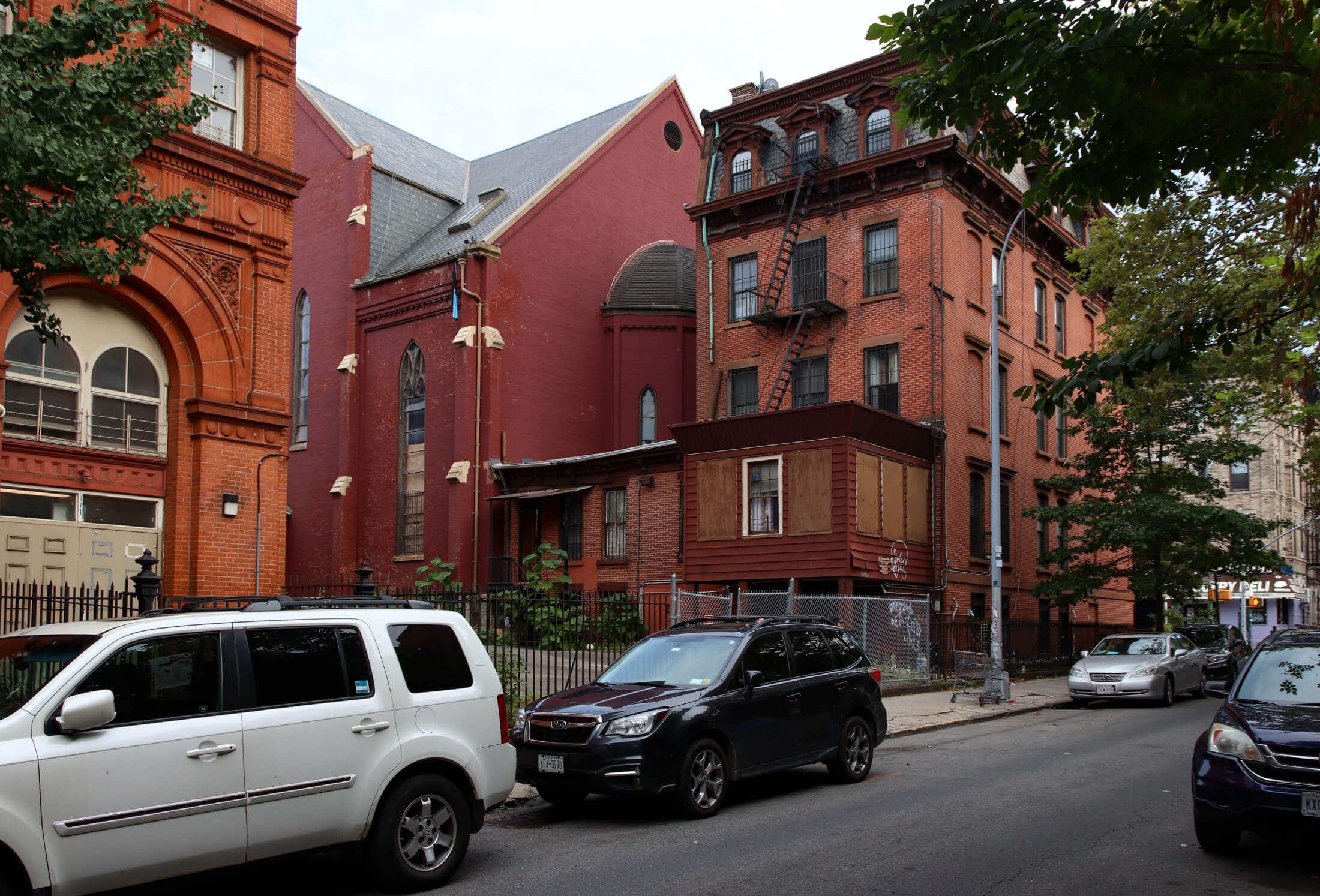
In 2008, the Sisters of Mercy Convent closed its doors, saying the building needed $20 million in repairs, and the nuns who served the community from there relocated. According to city records, the Sisters of Mercy still own the majority of the site.
In 2021, the parish house and rectory for the landmarked St. Mary’s Episcopal Church were demolished to make way for a new 17-story apartment building, which now towers over the historic church. Now, St. Lucy-St. Patrick’s Roman Catholic Church will likely be razed for the “rare opportunity to develop a sizable luxury residential building in a burgeoning Brooklyn neighborhood,” as investment firm JLL puts it.
Given the size of the church lot and its R6B residential zoning, it’s possible a building almost three times bigger than the existing church could go up, although it’s unlikely to be taller than five stories or higher than 50 feet. So far, no new-building permit has been applied for, according to city records. Meanwhile, next door, the mansard-roofed rectory already exceeds its allowable FAR (floor area ratio), so perhaps it will escape the wrecking ball.
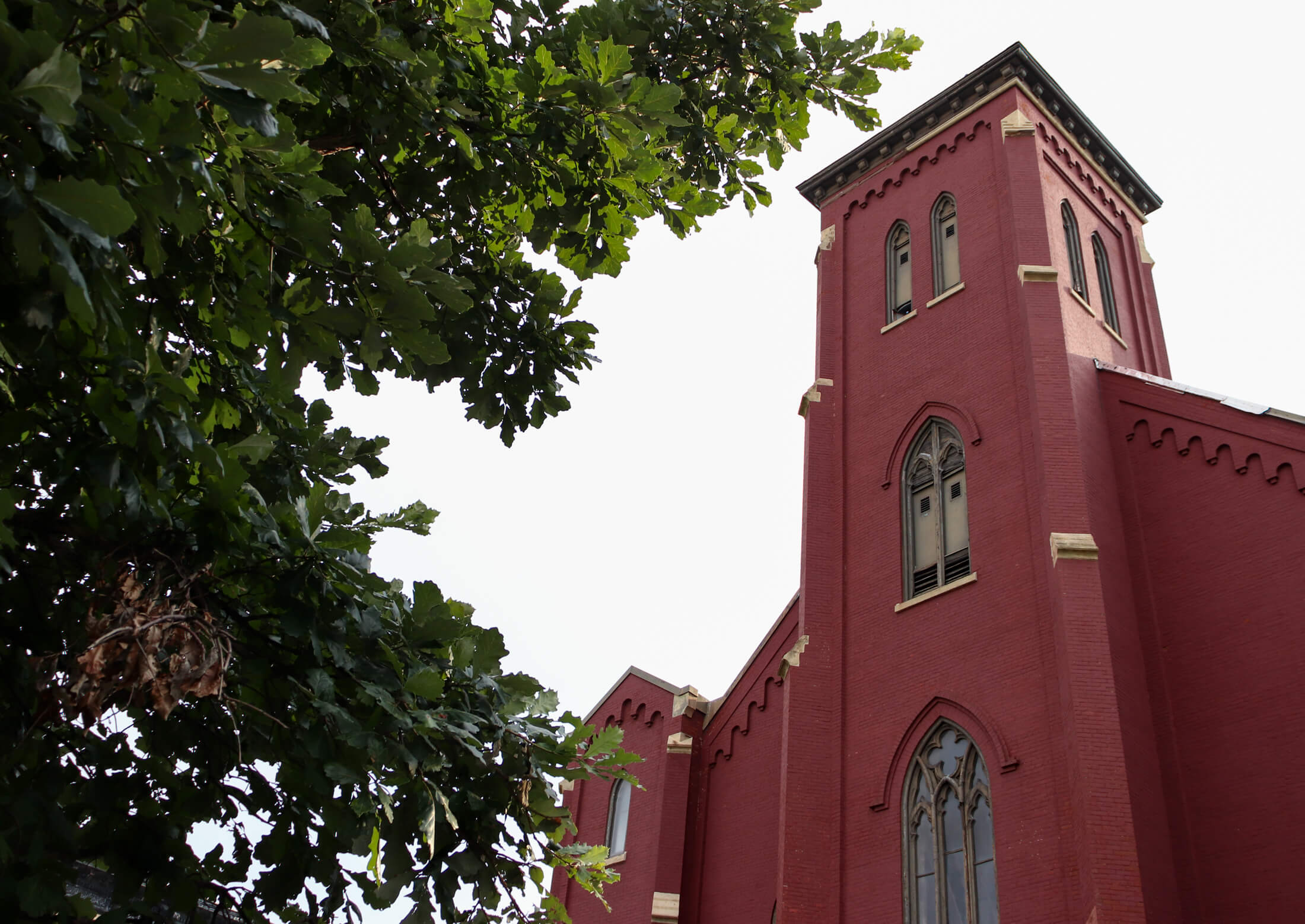
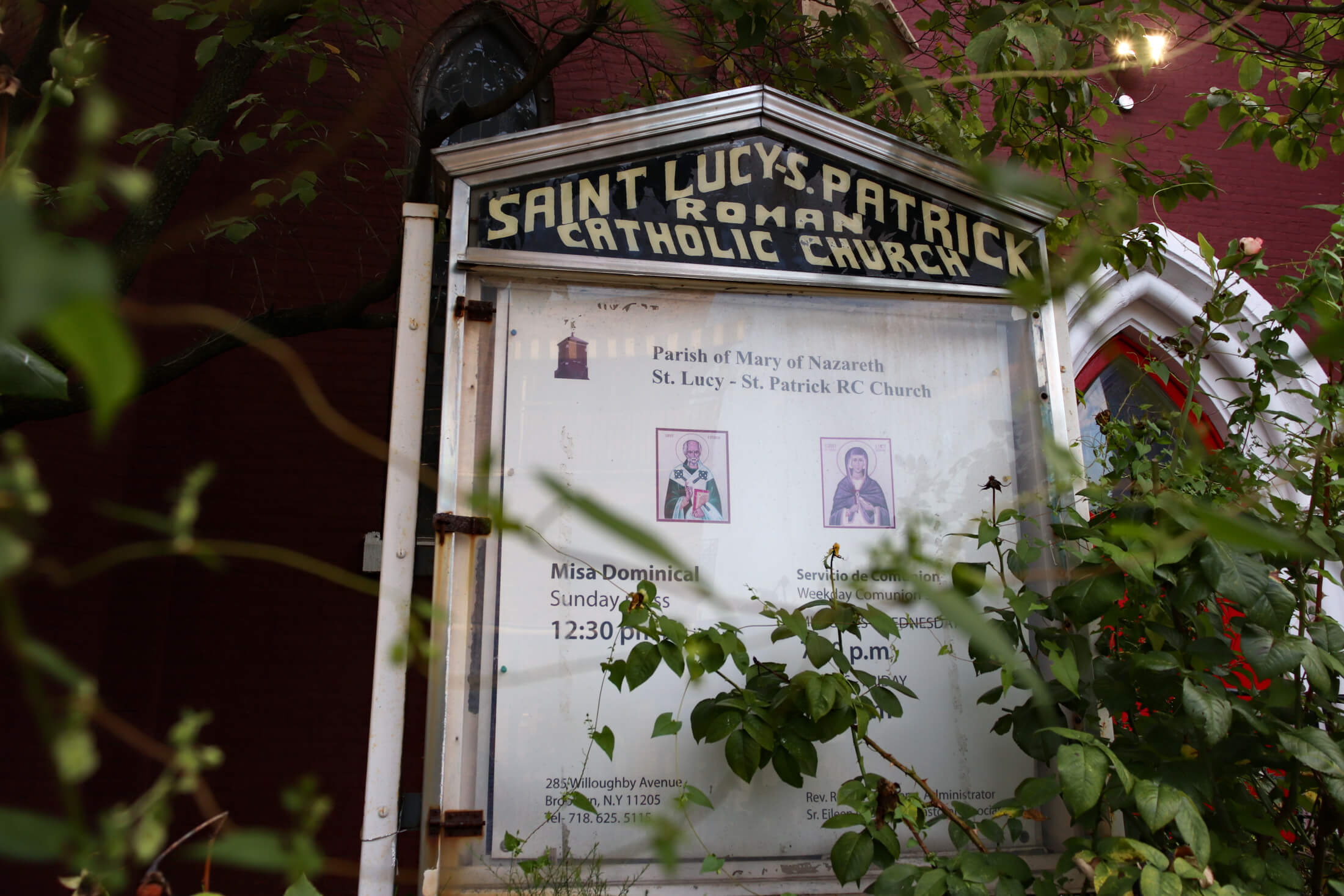
Williamsburg-based developer Watermark Capital Group’s projects in Brooklyn include a 19-story apartment tower that replaced a one-story church at 321 Wythe Avenue in Williamsburg and the adaptive reuse of an historic school at 125 Eagle Street in Greenpoint, a Romanesque Revival building that lost its distinctive gable and front entrance after 2012, old photos show.
The church is the latest in a years-long building sell off by churches all over the borough, which have faced declining attendance and deteriorating structures while property values have skyrocketed. Many have been demolished for new housing, but in some cases buildings are altered or extended, and occasionally preserved and adapted for new uses.
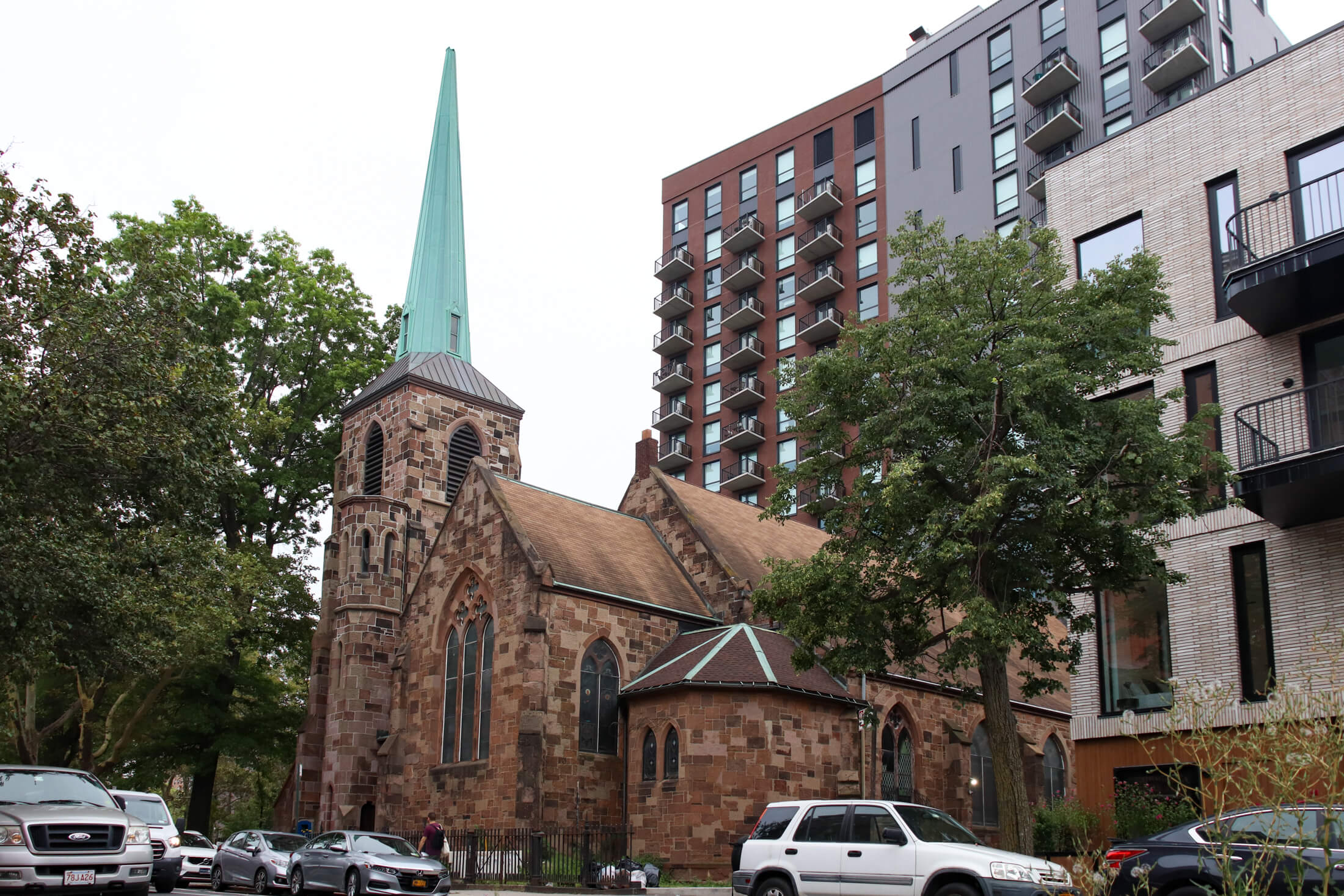
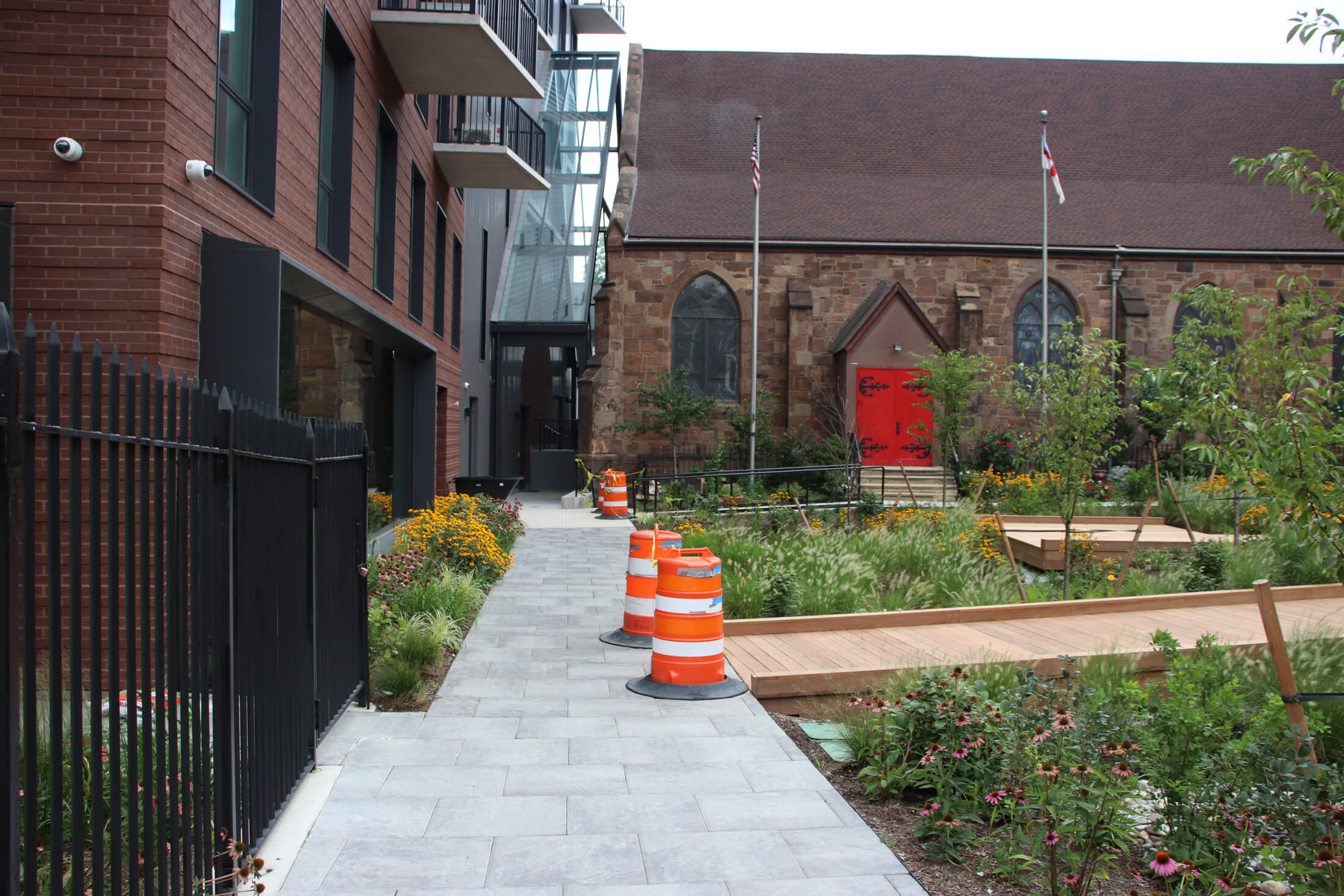
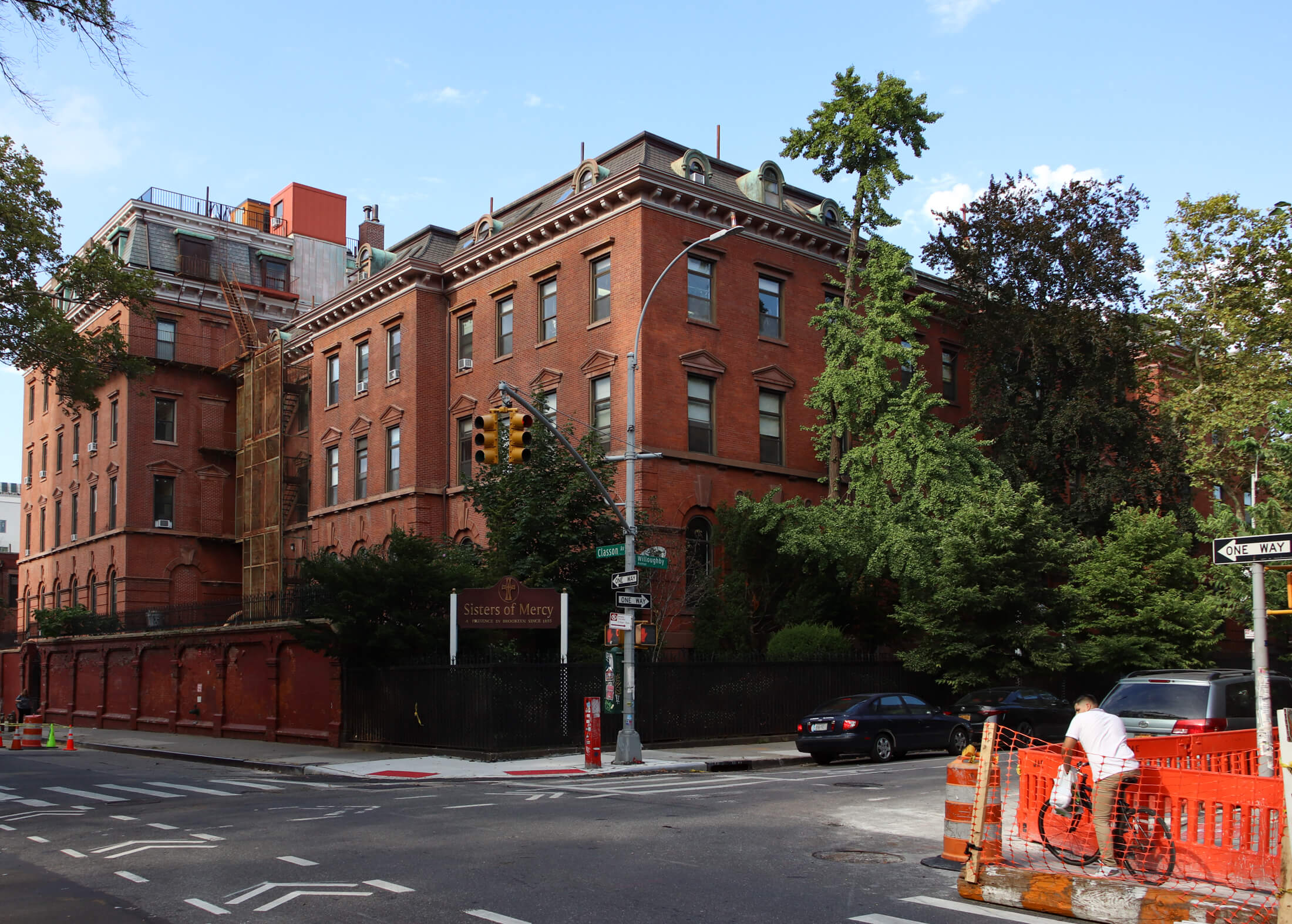
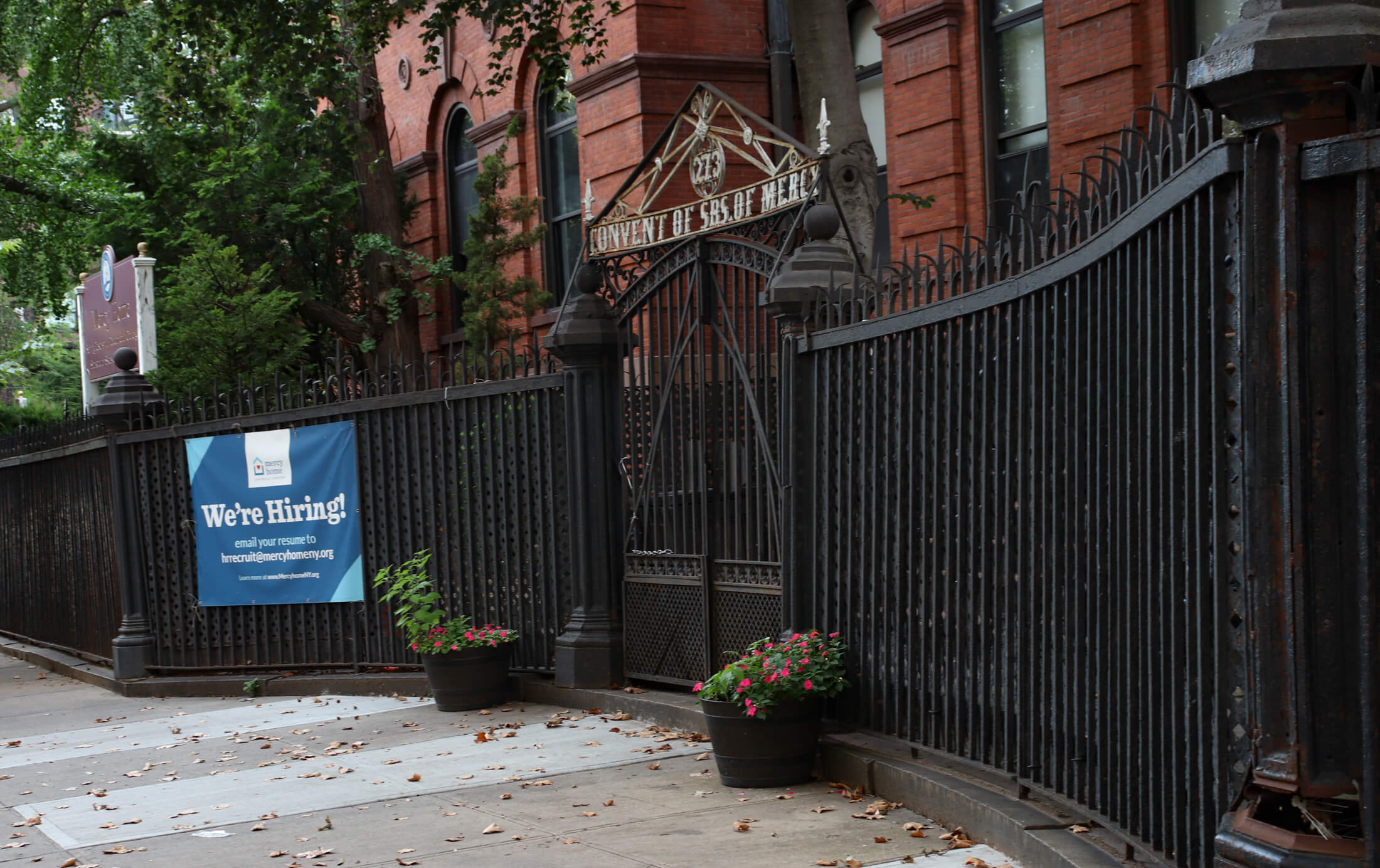
[Photos by Susan De Vries]
Related Stories
- Demo Starts, Fence Goes Up for Controversial Alteration of 19th Century School in Williamsburg
- Locals, Pols Ask AG to Save Historic Greenpoint Building Listed for $4.5 Million
- A Developer and Artist Duo Are Building Creative Hubs in Brooklyn. A Flatbush Church Is Next
Email tips@brownstoner.com with further comments, questions or tips. Follow Brownstoner on Twitter and Instagram, and like us on Facebook.





What's Your Take? Leave a Comment